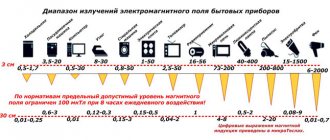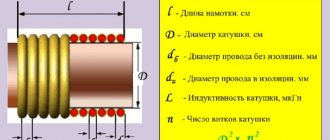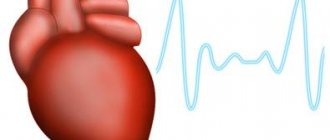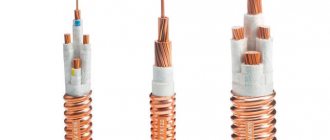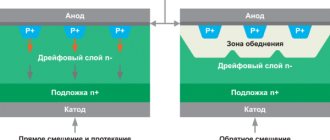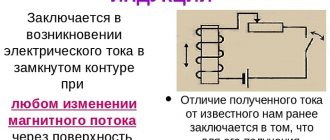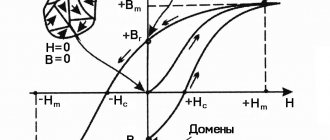Meaning of the concept
What is the phenomenon in mechanics and physics? Let's explain resonance in simple words in everyday life - this is a coincidence of the rhythm of movement. We need to remember some pleasant fun from childhood. We are talking about swinging on a hanging swing. One participant sits on the bar, the other helps him, pulling the seat more and more. A child could just as easily be in the assistant’s place; he or she can rock an adult. This “works” is mechanical resonance, in which the vibrations of the swing completely coincide with the frequency of the assistant. As a result, we get a jump in amplitude.
When swinging on a swing on your own, it is realistic to use the coincidence of vibrations for maximum range of motion:
- In a sitting position. You need to tuck and straighten your lower limbs to the beat.
- In a standing position. It's easier to swing together. In the beloved Boat ride, each participant must squat at the point of greatest lift, and then straighten up in the lowest possible position.
All efforts can actually lead to the swing making a full revolution around its axis. To prevent accidents, a circuit limiter is installed for the safety of vacationers. You need to understand that in order to get the effect of the coincidence of oscillatory movements, you need to get out of the resting state. Balance will not allow the swaying to increase. The described example relates to parametric excitation and vibration resonance.
The amplitude of the oscillations depends on the speed of movement. As it increases, the magnitude increases until it reaches its maximum. A further increase in speed will have the opposite effect. When constructing a graph of resonance - the dependence of the amplitude on the applied external force, we obtain a curve. The absolute maximum corresponds to a frequency that coincides with the natural oscillation frequency of the system. In physics and mechanics, resonance formulas are used - the dependence of amplitude on frequency and applied force.
Units
The number of movements is usually measured in Hertz (1 Hz). If the frequency value is known, for example 45 Hz, the body vibrates 45 times per second. There is a concept of forced movements, in this case there is a rocking body and a coercive force. The force is applied with a certain frequency. If there is a large difference in characteristics, there will be no jump in oscillatory movements.
The phenomenon was first explained and described from the point of view of mechanics and acoustics in 1602 by Galileo Galilei. His work was devoted to the oscillatory phenomena of pendulums and strings for musical instruments. In the description, the scientist deduced the dependence of a heavy pendulum to collect (accumulate) energy under external influence with a certain frequency value. The term was coined from the Latin word "resonantia", meaning echo. The magnetic form of the concept was theorized by James Clerk Maxwell in 1808.
How is frequency related to the phenomenon of resonance?
The general definition of resonance is quite acceptable for considering similar electrical processes. The nature of the phenomenon in this case depends on the parameters of the components that form the signal path. The induction element and capacitor act as energy storage devices. A gradual decrease in amplitude provides electrical resistance - an analogue of the friction force in a mechanical system.
A distinction is made between parallel and series resonance when choosing the appropriate circuit design. In the first option, an increase in current strength is provided when the frequencies coincide. The second is tension.
Z = √ R2 (2π * f * L – 1/2π * f * C)2.
Formulas and amplitude-frequency characteristics of a series circuit
What voltage resonance is is shown in the figure.
Resonance in everyday life
In everyday life, we often encounter resonance without even thinking about the meaning of the phenomenon. It is used in:
- radio transmitters and receivers;
- microwave ovens;
- musical instruments.
In the acoustic field, when playing a guitar, at a certain moment the strings begin to vibrate. A sound is heard when there is no direct player input. The energy from the absorption of vibrations increases greatly by the time the shocks (impact) coincide with natural movements.
The response is common in nature and artificial devices. Many people hear a sound, the source of which is the impact of a hard object (metal, glass, wood). They are caused by low frequency oscillations.
Bay of Fundy phenomenon
Between New Brunswick and Nova Scotia in Canada on the Atlantic coast there is a bay known throughout the world for its strongest tide. The difference in elevations between levels at the moment of maximum values reaches 18 meters. In one cycle, over one hundred billion tons of water passes through the central entrance of the bay. The duration of one period of low tide is constant - about 6 hours 13 minutes.
The uniqueness of a natural phenomenon “owes” to natural characteristics:
- the huge amount of water passing through the neck of the bay;
- the unique contours of the coast;
- resonant effect.
Compared to the average tide height in the oceans - 3 feet (about 1 m), the gigantic scope of translational movements of the water mass is amazing. The physical meaning of the phenomenon is explained by the following reasons:
- liquid in any volume has its own period of “oscillations”; it constantly moves with the same rhythm;
- the frequency of movements depends entirely on the size of the tank - length and depth;
- the large size of the bay ensures the constancy of internal water fluctuations;
- The tide cycle coincides with the internal fluctuations of water.
When the tide begins, a huge mass of water reaches the opposite shore, then moves in the opposite direction. There is a coincidence between the moment the water rolls back and the tide ebbs. In this case, the wave receives additional acceleration.
A long-shaped container with water is suitable for the model, if you swing it lengthwise in the same rhythm with the movement of the liquid. After a few vibrations, the water will overflow. In the Bay of Fundy the system is more balanced and therefore there is no overflow.
Positive and negative sides of resonance
An increase in vibrations of two times or more, compared with the original tolerance of the technical specifications, can lead to destruction of the structure. However, this same manifestation in another situation performs useful functions. It is convenient to study the pros and cons of resonance using specific examples.
Resonant converter
There is a certain reason for creating a heating system using electricity generated by solar panels. These “free” generators are becoming cheaper as production technology improves. You can assemble an effective induction heater yourself. Some circuits are not inferior in efficiency to factory analogues.
Water heater
The following examples of resonance demonstrate the negative aspects of the phenomenon:
- excessive increase in the amplitude of vibrations of vehicle suspension elements;
- harmful and unpleasant sound that is generated at resonant frequencies by technological equipment;
- the occurrence of interference in acoustic, optical and radio paths.
What are the benefits or harms of the phenomenon?
In order to talk about the positive or negative impact of the coincidence of oscillation frequencies, we need to remember its manifestation in one or another area of human activity.
Positive sides
There are many examples where the phenomenon of resonance is used. A sound wave is a vibration of air. Instruments have the ability to sound beautiful if the size, shape and material create the conditions for resonance. All wind and reed instruments sound due to the coincidence of sound frequencies.
When designing and constructing concert halls, the effect of acoustic resonance is used. The sound of music and artists' voices completely depends on the properties of vibrational movements. The ancient architects of the Middle Ages were excellent at the art of constructing structures with a strong acoustic effect. In St. Paul's Cathedral (London) there is a gallery where any sound or whisper can be heard clearly.
In the mining industry, when destroying or crushing hard rocks, the method of resonant destruction is used. This allows you to complete a large volume in a short time with great efficiency. Drilling holes in concrete structures is easier with a drill with a hammer drill function.
Large bells in temples are difficult to swing without a resonant effect. A child can disperse a massive tongue if he pulls the rope in time with the free movement. An adult will not be able to help him if his efforts do not resonate.
The magnitude of the frequency of alternating current is measured based on the phenomenon of coincidence of oscillation frequencies. The frequency meter device is used where it is necessary to monitor constant frequency values in electrical circuits.
Negative effect
The phenomena of coincidence of oscillation frequencies are diverse. When walking along a board between trenches, there is a possibility that the rhythm of the step and the system will coincide. Its role is played by a wooden base with a person. As a result, the board will begin to bend strongly (up, down).
A similar situation was recorded in 1906 in St. Petersburg on the Egyptian Bridge. As the cavalry squadron passed in formation, the precise rhythm of the trained horses coincided with the vibrations of the structure across the Fontanka River. The resonance led to the sudden destruction of the strong bridge.
To prevent such situations, military units are instructed to cross such structures at a free pace, and not “in step.” There is a speed limit for trains crossing the bridge for safety reasons. Therefore, impacts of wheels with rails at the joints occur less often than swings of the bridge. In some cases, for fast trains, the opposite principle is used: the speed is increased and the trains pass at maximum speed.
The ship has its own rocking period, and when the frequencies of the sea wave coincide with the floating craft, the rocking increases significantly. In this situation, the captain needs to change the speed or slightly veer off course. As a result of the actions, the period of the waves changes, the pitching returns to normal.
When large industrial mechanisms operate, force often arises due to imbalance (poor alignment, curvature of the supporting shaft). Its force is directed towards the support; the period of application may coincide with the vibrations of the foundation itself or the rotation of the shaft. As a result of resonance, huge structures are destroyed and load-bearing rotating parts are broken. To prevent emergency equipment failure, you need to take timely measures to weaken the effect.
Types of resonance phenomena
The effects under consideration manifest themselves differently in gases and in solids. They can occur in an electrical circuit with reactive components. Under certain conditions, the resonant effect will destroy a brick house or tear apart the walls of a strong boiler of a steam engine. Correct use of this phenomenon helps to improve the noise immunity of radio equipment and successfully solve other practical problems.
Mechanical resonance
To calculate the parameters of a mechanical system, you can continue to study the pendulum. The natural movement of the swing is slowed down by friction of functional components and air resistance. To prevent vibration damping, an external force (F) must be applied. Maximum efficiency will be ensured by frequency matching. The calculation algorithm is shown below.
The period (T) is determined by the formula T = 2π√(L/g), where g is the free fall acceleration constant (≈9.8 m/s2). The natural frequency of the structure is v = 1/T. If we add the definition of Newton's second law (direct proportionality of the impulse of the system to the force and time (Δt) of the action), the frequency can be expressed as:
v = ((F* Δt)/m) * N,
Where:
- N – number of pulses;
- m is the total mass of the load.
Since energy is conserved in a closed loop (ideal example without losses), it is permissible to use the following proportions:
(m*v2)/2 = m*g*h = m*g*L*(1-cos α).
From these combinations, simple transformations yield two formulas for calculations:
- N = (m/(F* Δt)) * √(2*g*L*(1-cos α));
- t (total time to perform N oscillations) = N*T = (2π*m*L)/(F* Δt)) * √(2*(1-cos α)).
Substituting certain initial values, the periodicity of the necessary resonant oscillations is calculated:
- m=100kg;
- F = 10N;
- L = 200 cm;
- Δt = 1 s;
- N = 34;
- t = 96;
- T = 2.8 s.
Electrical oscillatory circuit
The phenomenon of resonance can be observed in AC circuits when the frequencies of the power source (signal) and the reactive components of the circuit coincide. In this case, we can consider electrical resistance as an analogue of friction forces in a mechanical system.
Current resonance
To create the necessary conditions, you can use a parallel connection of standard elements (R, L and C). If we ensure equality of the impedances of the reactive components, at a certain frequency the total value of the currents in the corresponding circuits will be greater than the current of the power source. The graphics in the figure demonstrate a vector representation of electrical parameters. In this mode, there is a uniform distribution of the energy balance of the oscillatory process, which is supported by the capacitor and inductor.
For calculations, it is necessary to clarify the influence of each component. Capacitance creates an obstacle to the passage of current, determined by the formula:
Xc = 1/(2π*f*C),
Where:
- Xc – resistance;
- f – frequency;
- C – capacity.
The inductive component is determined as follows:
XL = 2π*f*L.
Loop impedance:
Z = √R2 + (2π*f*L – 1/(2π*f*C)2.
If the reactive components are equal, it is easy to conclude that 2π*f*L = 1/2π*f*C. The frequency at which resonance appears is calculated using the formula:
Fresonance = 1/2π * √ (L*C).
Conditions for voltage resonance in a series circuit
Complex vibrational structures
If you use a transformer to form a connection between two oscillatory circuits, the calculation becomes more complicated. To create the necessary conditions, the equality of the reactive components is ensured.
The figure shows the change in bandwidth for different values of the coefficient (K), which determines the voltage transfer. When this parameter increases above the critical level (K>Kcr), a double-humped curve is formed. The maximum bandwidth is provided at K = 0.7*Kmax. Further strengthening of the connection forms a gap in the middle part.
Nonlinear systems
If there are no symmetrical reactions to external influences, resonance phenomena manifest themselves in a special way. In particular, the presence of a coil with a ferrite core in the circuit significantly complicates accurate calculations. In such materials, the magnetic properties are determined by the nonlinear distribution of elementary components.
What types of resonance exist?
The phenomenon is characterized by features; types are distinguished:
- Mechanical. When designing industrial facilities, safety measures must be taken into account. If the mechanical frequencies of the basis of machines and mechanisms coincide with the vibrations of the engine, a resonant effect may occur.
- Electric. Observed in electrical circuits at a certain frequency. The phenomenon is used in wireless signal transmission - television, cellular communications.
- Optic. With a special arrangement of optical cavities (mirrors), a resonator for light waves is observed. The phenomenon is used in laser systems and parametric generators.
- Nuclear magnetic resonance. Abbreviated as NMR, it is used in medical diagnostics, when performing magnetic resonance imaging.
- Public. Society often uses the concept of a response to an event, phenomenon or random occurrence. The response to the incident is a similar reaction of a large mass of people. A recent example is the increase in the retirement age introduced by Federal Law in 2022. As a result, the response from the majority of citizens was the same - negative and disagreement with the decision.
- Cognitive or psychological. If the subject meets someone and has a positive impression, we can talk about the consequence of resonance. At the same time, interests, judgments, and opinions coincide. In psychology, resonance is the unity of souls, aspirations and emotions.
- Plasmon resonance. In quantum physics, the concept of plasmon is used. These are quasiparticles in current conductors, when excited at a certain frequency that coincides with an external electromagnetic wave. The phenomenon is used in the design of sensors for chemical or biological systems.
The phenomenon of resonance is a very effective way to implement many tasks in everyday life, science, music, and construction. It must be remembered that there is a negative impact, it must be prevented as much as possible in order to prevent destruction and health problems.
Examples
One familiar example is the playground oscillation, which acts like a pendulum. Pushing a person in the swing at the natural interval of the swing (its resonating frequency) will cause the swing to rise and higher (maximum amplitude), while trying to push the swing at a faster or slower pace will result in smaller arcs. This is because the energy that the vibration absorbs is maximized when the shocks are "in phase" with the natural vibrations of the vibration, while some of the vibration energy is actually extracted by the opposing force of the shocks when they are not.
Resonance occurs widely in nature and is exploited in many artificial devices. This is the mechanism by which all sine waves and oscillations are actually produced. Many sounds we hear, such as when hard objects of metal, glass or wood are struck, are caused by momentary resonating vibrations in the object. Light and other short wavelength electromagnetic radiation are produced by resonance at the atomic level, such as electrons in atoms. Other examples:
- When timing the mechanisms of modern watches and clocks, for example, a balance wheel in a mechanical watch and a quartz crystal in quartz are observed
- Tidal resonance of the Bay of Fundy
- Acoustic resonances of musical instruments and human vocal cords
- The destruction of a crystal glass when exposed to the musical tone of the correct pitch (its resonating frequency)
- Electrical resonance of tuned circuits in radios and televisions that allow radio frequencies to be selectively received
- Creation of coherent light by optical resonance in a laser cavity
- Orbital resonance, as illustrated by some moons of the solar system gas giants
- Material resonances at the atomic level are the basis of several spectroscopic methods used in condensed matter physics
In the dictionary D.N. Ushakova
RESONANCE, resonance, plural. no, husband (from lat. resonans - giving an echo).1. The response sound of one of two bodies tuned in unison (physical).2. The ability to increase the strength and duration of sound, characteristic of rooms whose internal surface can reflect sound waves. There is a good resonance in the concert hall. There is poor resonance in the room.3. Excitation of vibration of a body, caused by vibrations of another body of the same frequency and transmitted by an elastic medium located between them (mechanical).4. The relationship between self-induction and capacitance in an alternating current circuit that causes maximum electromagnetic oscillations of a given frequency (physical, radio).5. trans. Echo, echo (book).
Physical definition and binding to objects
Resonance in an electrical circuit
It is easy to study mechanical resonance; what it is is explained in simple words as follows. If a large bell is struck too often, the sound quickly fades. By gradually increasing the interval, even without changing the force of impact, powerful sound vibrations can be created. This example demonstrates the coincidence of the frequencies indicated above.
When reducing the size of the bell, to obtain the desired effect, change the rhythm of the influences
In complex systems, it is necessary to take into account the presence of several resonant frequencies and the corresponding total indicator. Also worth noting is the quality factor. This term usually means the ability of an object to perceive external vibrations. At values close to unity, a critical increase in the oscillation amplitude is permissible, up to mechanical destruction.
Under what conditions does the phenomenon occur: basic conditions
The resonance of electric currents and voltages appears as a result of maintaining the identity of the reactive characteristics of the network resistance. Despite this, it must also have an active characteristic of at least a minimum value. The frequency of the connection power generator must always coincide with the resonance frequency of the inductive-capacitive network circuit.
Note! The condition for active resistance to operate in real operating circuits is almost always met. The reactive characteristic of capacitance and inductance alone is only possible in isolated and theoretical examples
Graph and vector diagram of the occurrence of resonance
During resonance, the inductor and capacitor exchange accumulated energy. In theoretical examples, when the electric generator is first connected (as a power source), the energy is stored in an inductor or capacitor. After the electric generator is turned off from the network, oscillations of a non-damped nature arise as a result of this exchange.

